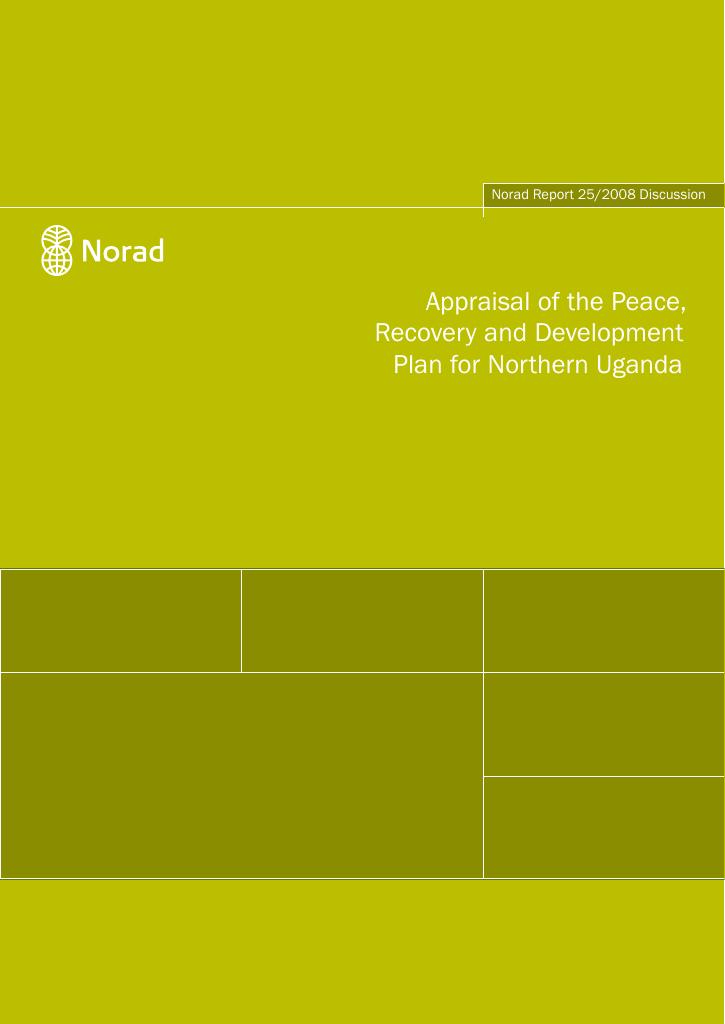Kartlegging
Appraisal of the Peace, Recovery and Development Plan for Northern Uganda
Peace and development prospects for Northern Uganda have improved in recent years and in 2006 the Government of Uganda (GoU) signed a Cessation of Hostilities agreement with the Lords Resistance Army (LRA). Despite challenges, it has given the communities some level of hope and optimism needed to embark on the long process of recovery. Since 2007, large numbers of Internally Displaced People (IDP) have moved to their original homes or transit sites located in nearby parishes. However violent conflict continues to pose major challenges in Karamoja in the North East sub-region. In response to these developments GoU has put into action a number of measures aimed at enhancing the protection of the civilian population and promoting development to reduce the disparities in welfare between Northern Uganda and the rest of the country. The response is articulated in the GoU's Poverty Eradication Action Plan (PEAP) which among others focuses on measures for security and conflict resolution. Among GoU responses have been an IDP policy and various programmes targeting Northern Uganda. While these interventions have registered some progress, GoU has stillconsidered them inadequate with low effectiveness due to insufficient resources; lack of coherence, poor coordination, absence of strong local government structures to support implementation and poor accountability systems.
